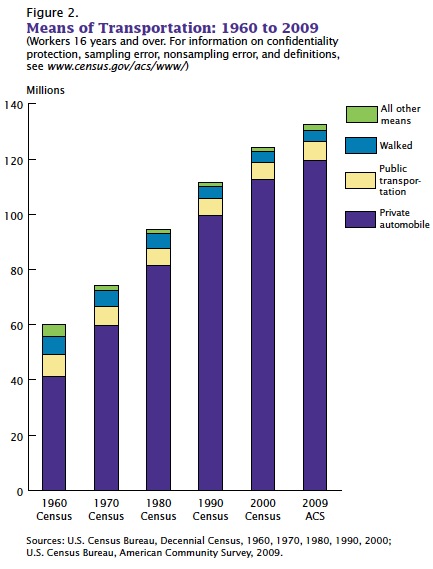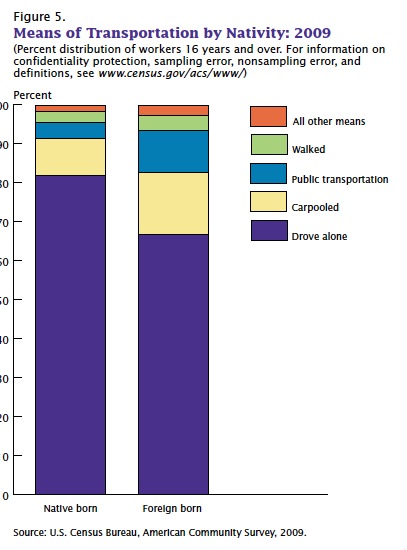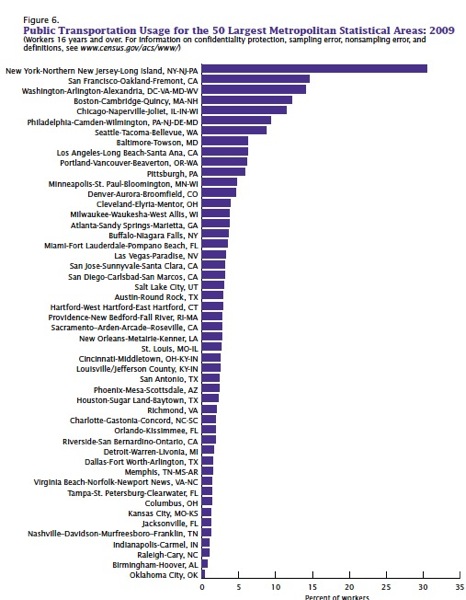So I got plenty of blowback on yesterday’s post (and not from the gentle and insightful commenter here) about what a mean meany meanpants I am for not being nicer about the “need” for light rail as a means to coddle white transit riders who won’t use buses. I’m used to histrionics from sensitive wee flowers who want their casual racism unquestioned, let alone being unwilling to condone the All Things Rail All the Time thinking that dominates transit.
Here’s why people should never play the “what white people will ride” card, when advocating for any mode or service, ever.
1. White people already dominate urban policy, including transit policy, without any help from the rail fanboys acting as amplifiers. If there is one thing transportation policy in the US has not suffered from, it’s a failure to prioritize what white people want. So supposedly, white people want high levels of service, which means rail, if you believe you can’t serve passengers well with buses.(Which I don’t, but lots of people do.)
Unfortunately, an aversion to buses or low service quality doesn’t explain why many white people moved themselves, and continue to move themselves, into auto-oriented enclaves not served by rail or anything else. It does not explain why white people throughout the US have systematically voted for one property tax avoidance measure after another, thereby sealing off city governments’ most likely own-source revenues to support the operations and building of urban transit systems. Aversion to buses alone doesn’t explain why legislators in states across the US passed measures forbidding state gas taxes to be spent on anything other than roads. Then there are the enclaves that sue transit operators for putting stops and stations in their neighborhoods, regardless of whether it’s a bus stop or rail station. Then there is the fact that white people whine like a swarm of gnats at the mere mention of higher gas taxes, or vehicle registration fees, or tolls, or parking charges, thus squelching all the likely nonlocal alternatives to the property tax which can yield revenues with which to provide more transit.
Call me crazy, but I think these are the very last people we should spend transit resources on, let alone lavish them with premium services, since, short of actually deploying the US military against transit infrastructure, they couldn’t make it more obvious they don’t want anything to do with transit.
Substitute “transit” for “toast” in the conversation, and we have nailed what an apparently not insignificant group of white Americans have communicated through their revealed preferences–in land markets and politics: they want to be isolated from transit, and they don’t want to pay for it.
The opposite is true as well: when empowered white constituencies want rail, they usually get it via their influence in land markets and regional politics. Unless it’s rail to LAX which I believe may have incurred the wroth of a one-eyed Gypsy woman who also told off Lon Chaney,Jr.
So “what white people want” is already nicely represented among the power elite without transit people acting like white people’s preferences are special.
2. What white people will ride is the wrong question. The right question: what transit level of service is sufficiently good to attract the most customers?
There’s a big difference in framing between “let’s worry about what white people think is good enough for them” and “Our service should be so good that even fussy, time-sensitive, amenity-sensitive customers will demand it.” Think about it. I’m willing to entertain the latter as a service goal, by all means. The former? Racist.
3. Poor transit service quality is a legitimate reason not to take a bus. Refusing to take a bus, no matter how well it actually operates, because you associate buses with poor people or people of color, is odious. And it’s definitely not a reason we should spend one thin dime of public investment in modes you think are higher class.
Some US regions, like my own, are decades away from being able to serve neighborhoods without residents of those areas ever having to use a bus. Treating buses like an inherently second-class service in these environments means we undermine riders in those areas for a long time.
And if people really do refuse to ride buses no matter how good the bus service is, that sounds less like demanding good service and more like an ironclad excuse to keep your lazy ass in your car in perpetuity while pretending you’d be willing take transit, but only in some fantasy future when rail transit will be built over every square inch of a metropolitan region.* And catering to that nonsense is a way to always have a ready-made, ironclad rationale for arguing we should prioritize rail investment over every other transit goal.
And if we really believe that white people won’t take a bus because of their social biases (rather than service quality concerns), why would our response to that be “please, please, oh pretty please with sprinkles on top, let us use up precious resources to kowtow to your your morally repugnant, anti-social beliefs by gold-plating a small number of facilities for you, you poor dear fragile thing” instead of the way a civilized public should respond, which is: “Stop it.”
I get that things don’t work that way in majoritarian politics, but can’t we be a little more sensitive in transit towards our patrons of color than to say we should upscale some service areas with very expensive investments because that’s all white people will ride?
*If you refuse to ride a bus, but you are walking or biking or skateboarding or using your solar-powered jet pack, you are allowed to ignore me.


